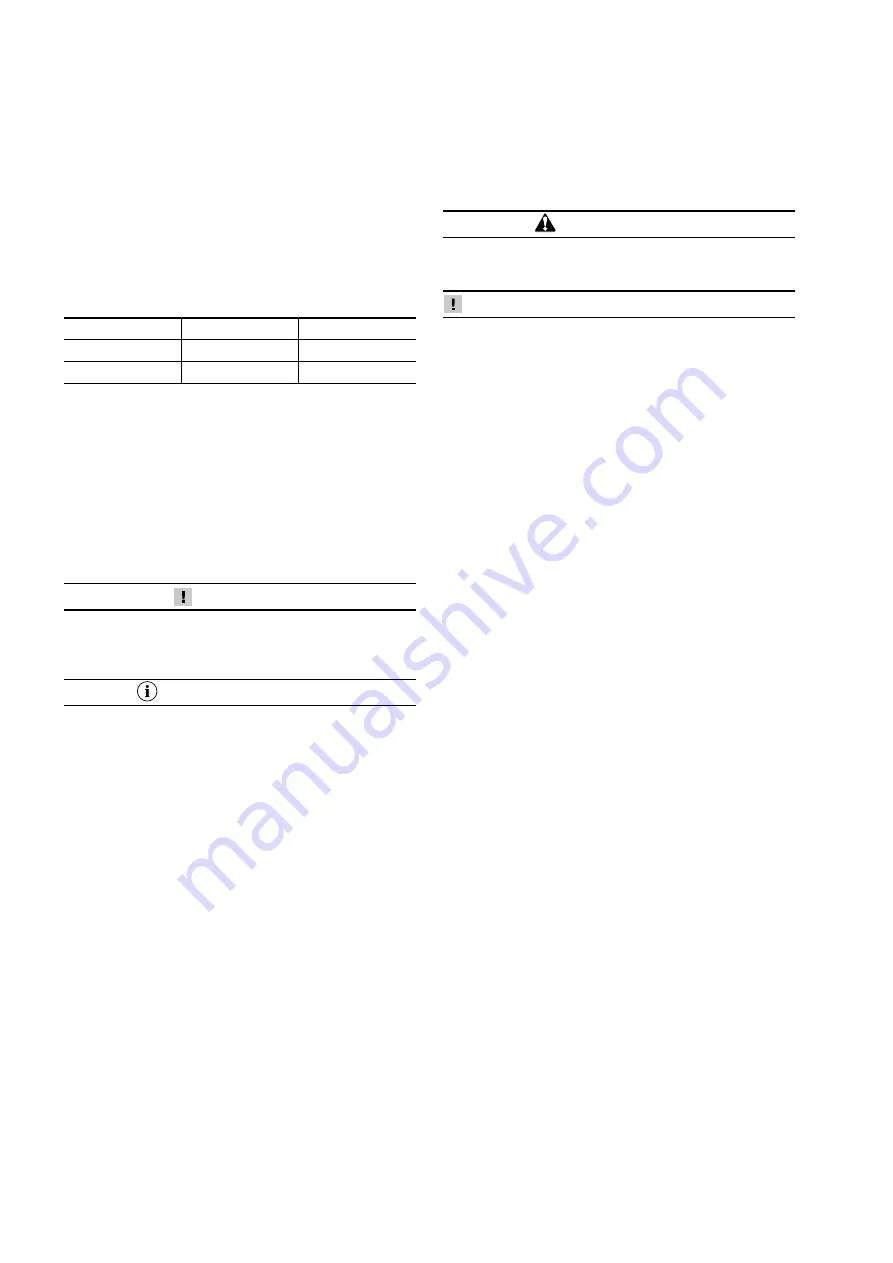
12
Mounting- and Operating Instruction CEAG DualGuard-S
40071860347 January 2020 www.ceag.de
5 Transport, Packaging and Storage
Annual visual inspections:
• Screw connections (check unsecured screw connections
for tight fit)
• Battery installation and accommodation
• ventilation
If block voltages are outside the specified range or if the
surface temperatures of different blocks differ by more than
5 K, customer service should be requested.
in operation since 6-V-blocks
12-V-blocks
6.81 V
13.62 V
< 6 month
6.60 - 7.19 V
13.33 - 14.16 V
> 6 month
6.64 - 7.16 V
13.38 - 14.11 V
Tab. 7: Permissible range of float charge voltages
4.7 Störungen
Verhalten At Störungen
Hierzu finden Sie in der Montage- and Betriebsanleitung
ZentralBatterysystem entsprechende Angaben.
4.8 Spare parts
Only use original spare parts from the manufacturer.
ATTENTION!
Wrong or faulty spare parts from other manufacturers can
cause serious damage to the battery. Ensure the same char-
ging state when changing the battery blocs.
RECOMMENDATION:
not more than 25% of the battery packs of a battery set
should be replaced. Therefore with 18 packs not more than
5 packs should be replaced.
When 50% of the expected service life is exceeded and
single battery packs fail, the complete set should be replaced
4.9 Ordering Spare Parts
Please state the following when ordering spare parts:
• order number
• rated capacity
• Typee
In case of complaints you need a RMA - number from us. For
further information see www.ceag.de!
5 Transport, Packaging and Storage
SAFETY NOTES!
WARNING! RISK OF INJURY! There is a risk of injury when
transporting or loading due to falling parts.
ATTENTION! DAMAGE TO PROPERTY!
Batterys will be destroyed or damaged by improper transport.
The following safety instructions must therefore always be
observed:
• Never lift loads over persons.
• Always move the device with the greatest care and caution.
• Only use suitable slings and hoists with sufficient load-
bearing capacity.
• Always transport and store the DualGuard-S system upright
(markings and tilt indicator on the packaging).
• Avoid ingress of dust and moisture during transport.
• Ensure that all transport routes are clear (sufficient width
and clear height for all transport movements). Sufficient
space is available for people to move aroand if loads tilt or
slip. Have sufficient load-bearing capacity (for load, pak-
kaging and means of transport). The means of transport
used cannot be overstrained with regard to gradients and
the nature of the subsoil.
• Only use means of transport (e.g. lift trucks, forklift trucks,
etc.), slings (traverses, chains, ropes, etc.) and securing
devices (wedges, squared lumber, guide, tensioning, se-
curing ropes, etc.) in perfect technical condition and with
sufficient load-bearing capacity.
• Observe all instructions regarding transport conditions,
transport position, attachment points on the transport
packaging or on the device / switch cabinet.
For the execution of transport work, use only personnel who
are familiar with the usual methods and signals and are able
to carry out the transport work professionally, safely and in
accordance with the risks involved.
5.1 Transport inspection
Check delivery immediately upon receipt for completeness
and transport damage. In case of externally recognizable
transport damage, do not accept the delivery or accept it
only ander reservation.
5.2 Packing
If no return agreement has been made for the packaging,
separate materials by Typee and size and return them for
further use or recycling.













































